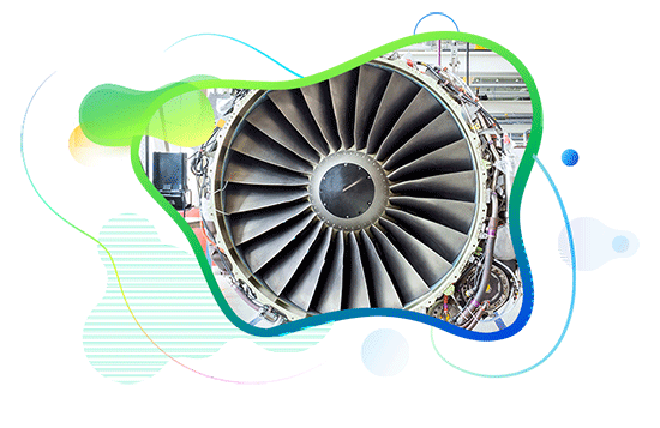
Role of MRO Aviation Software in Overcoming Supply Chain Challenges
Role of MRO Aviation Software in Overcoming Supply Chain Challenges
6:27
Published :

Supply chain disruptions cost the aviation industry billions of dollars each year. Maintenance delays and parts availability affect aircraft downtime, operational efficiency, and the bottom line. Smart MRO supply chain strategies can transform your operations significantly. Modern MRO software users have seen remarkable results: an 11% increase in customer on-time delivery, 10-day faster turnaround times, and 6% yearly savings in material costs.
Modern MRO software is packed with robust features. Companies get up-to-the-minute inventory tracking, predictive maintenance scheduling, and automated procurement processes. These digital solutions fundamentally change supply chain management and help maintain peak operational efficiency in the aviation sector.
Manual processes and scattered data can slow down operations, so digital solutions are vital to stay competitive. Your MRO software can automate 70-90% of routine parts purchases and boost operational efficiency. The automation covers several supply chain areas:
Digital solutions can improve your supply chain metrics substantially. Companies save up to 20% in costs compared to manual processes and see a 15% improvement in on-time delivery. Procurement cycles that once took weeks now take minutes. This helps you keep inventories lean while ensuring parts are available when needed.
Better supplier relationships are another benefit. Working together through integrated MRO software cuts transportation and administrative costs. Suppliers also perform better in meeting purchasing needs. Your procurement team can tackle strategic work while the software handles day-to-day operations. This leads to 30-50% productivity increases through algorithmic decision-making.
Up-to-the-minute visibility gives you another edge. Modern MRO software shows stock levels, consumption patterns, and order statuses instantly. This clear view helps you make smart inventory decisions and avoid expensive stock-outs that could ground aircraft.
MRO operations face significant challenges with supply chain visibility. Recent industry data shows nearly 30% of aerospace and defense companies cannot deliver parts to their destinations on time. Your MRO supply chain's success relies on overcoming three key factors:
New markets create additional hurdles with scattered aftermarkets and underdeveloped logistics networks. Smart aviation companies now focus on building their digital capabilities through predictive maintenance and continuous improvement.
Your MRO supply chain needs modern inventory tracking systems. Airlines typically maintain approximately $1.9 million of inventory per aircraft. Digital transformation and advanced technologies will help you improve supply chain visibility, speed up procurement, and encourage better teamwork throughout your network.
Predictive analytics is changing how aviation maintenance operations deal with supply chain challenges. A robust MRO aviation software now uses AI and machine learning algorithms to analyze operational data and forecast maintenance needs with remarkable accuracy.
Your MRO operations will see major benefits from predictive analytics:
Your MRO software's predictive features do more than schedule routine maintenance. You can spot potential component failures before they happen through sophisticated pattern recognition and statistical analysis. Your maintenance team can optimize inventory levels based on actual conditions rather than fixed schedules. This approach cuts carrying costs and prevents stockouts.
Predictive analytics excels at processing multiple data streams at once. Your software analyzes sensor data, maintenance logs, and operational systems to give immediate insights into equipment health and performance trends. This evidence-based analysis helps you make smart decisions about maintenance scheduling, parts ordering, and operations adjustments.
Predictive maintenance strategies can turn up to 60% of unplanned maintenance work into scheduled activities. This change improves operational efficiency and leads to better resource allocation with reduced aircraft downtime. The system's 99% predictive accuracy means you can rely on its maintenance forecasts.
MRO aviation software is a vital tool for modern aviation maintenance operations. Your organization can achieve major improvements in multiple areas. The benefits range from 30% reduction in maintenance costs to 70-90% automation of routine purchases, which leads to boosted operational efficiency and less aircraft downtime.
The numbers speak for themselves. With 99% predictive accuracy, 20% cost savings over manual processes, and 15% better on-time delivery rates, these results prove why digital transformation isn't optional anymore for aviation maintenance operations - it's a necessity.
Your maintenance operations will see immediate positive changes when you implement MRO software smartly. Live inventory tracking, automated procurement, and predictive maintenance capabilities work in harmony to reduce disruptions and optimize resources. Your team can concentrate on strategic tasks while the software manages routine operations.
Aviation keeps evolving, and MRO aviation software provides the foundation for eco-friendly growth and operational excellence. Companies that accept new ideas through these digital solutions stay ahead of competitors and face future challenges confidently.

All Rights Reserved. © Copyright 2024. Ramco Systems.